Switch to the mobile version of this page.
Vermont's Independent Voice
- News
- Arts+Culture
- Home+Design
- Food
- Cannabis
- Music
- On Screen
- Events
- Jobs
- Obituaries
- Classifieds
- Personals
Browse News
Departments
-
Education

Scott Official Pushes Back on Former State…
-
News

Burlington Budget Deficit Balloons to $13.1 Million
-
Education

Senate Committee Votes 3-2 to Recommend Saunders…
- Court Rejects Roxbury's Request to Block School Budget Vote Education 0
- Norwich University Names New President Education 0
- Media Note: Mitch Wertlieb Named Host of 'Vermont This Week' Health Care 0
Browse Arts + Culture
View All
local resources
Browse Food + Drink
View All
Browse Cannabis
View All
-
Culture

'Cannasations' Podcaster Kris Brown Aims to 'Humanize'…
-
True 802

A Burlington Cannabis Shop Plans to Host…
-
Business

Judge Tosses Burlington Cannabiz Owner's Lawsuit
-
Health + Fitness

Vermont's Cannabis Nurse Hotline Answers Health Questions…
-
Business

Waterbury Couple Buy Rare Vermont Cannabis License
Browse Music
View All
Browse On Screen
Browse Events
Browse Classifieds
Browse Personals
-

If you're looking for "I Spys," dating or LTRs, this is your scene.
View Profiles
Special Reports
Pubs+More
It's in the Building: How COVID-19 Overwhelmed a Burlington Nursing Home
Published June 3, 2020 at 10:00 a.m. | Updated December 23, 2020 at 2:21 p.m.
The order came over the intercom: Managers, meet now in the lobby.
Social worker Tiffany Smith knew what it meant. If the latest test for the coronavirus at Birchwood Terrace Rehab and Healthcare had been negative, she would have heard through a text message, the same way she had previously learned that residents with a cough or fever didn't have the disease.
The 16 managers gathered near the recently locked double-door entryway so the nursing home's executive director, Alecia DiMario, could deliver the news.
It was Monday morning, March 30, and Birchwood Terrace had just become the second eldercare facility in Vermont with a confirmed case of COVID-19.
Across the Queen City at Burlington Health & Rehabilitation Center, the virus had already infected dozens and killed eight elderly residents in just two weeks. Birchwood's caregivers and other staff understood — they thought they understood — how one case could become two, then four, then 16, and keep multiplying until the virus alone would decide who inside the building would live and who would not.
Still, they had reason to hope.
They had been preparing for weeks, even earlier than public health officials were asking. During the anxious two-day wait for a lab to process this resident's test, they had sealed off the area around his room with plastic sheeting and worn protective gear whenever they entered to care for the man.
After DiMario spoke, the managers put on surgical masks and got to work. They notified families and instructed coworkers and began to lock down every part of the home. Then they inserted long swabs into the nasal cavity of each resident who lived in the hallway where the first case had just been discovered.
DiMario thought those tests would prove that her team's quick action had prevented the virus from spreading.
Instead, the results revealed an outbreak already out of control.
Over the next six weeks, as others exhaled because Vermont had suppressed new infections, Birchwood Terrace would become fully engulfed. The outbreak at this corner lot in a quiet New North End neighborhood would swell to become the state's largest.
Sixty-one of the home's 112 residents, plus 30 employees, would test positive for the virus. Other residents would be presumed to have contracted it because of the symptoms they showed; the total estimated number of infected residents would top 80.
One in five residents would die. All told, Birchwood would account for 21 of 55 confirmed coronavirus deaths in Vermont as of June 2. Two other Birchwood residents were presumed to have been killed by the disease, but their infection was never confirmed, according to their death certificates.
Locally, this unthinkable toll was an exception. But similar devastation has played out in thousands of nursing homes across the country, by some tallies killing at least 40,000 elderly residents and caregivers.
To begin to understand how the outbreak at Birchwood advanced, Seven Days spoke to more than 30 health care workers, residents, residents' families, public officials and others. The people who agreed to be interviewed are only a fraction of those who have been affected. But they gave detailed accounts of the virus' asphyxiating grip — and of the long recovery that's only just begun.
The Outbreak
Two days before the fateful announcement, Sarah Batten stepped into a cool spring night and strolled the same path to work that her grandmother, Joyce, had walked for decades.
Joyce had lived in a small teal house on Starr Farm Road, separated from Birchwood Terrace by a short stretch of woods. A geriatric nurse, she worked at the nursing home for more than 20 years before her death in 2009.
Sarah Batten later moved into her grandmother's old house with her three children, ages 8, 10 and 15. The 37-year-old nurse joined Birchwood last fall and recently became the unit manager for its long-term-care wing, working alongside some of her grandmother's former colleagues.
Nursing homes always boast of offering family-like care, but at Birchwood, ties do run deep. In an industry often defined by staff turnover, some Birchwood employees have worked there for many years. Employees are proud the home doesn't use traveling fill-in workers for its staffing needs and that they can count on each other to run a bake sale for a colleague who falls on hard times.
The home itself, stretching west along Starr Farm Road from the intersection with North Avenue, hasn't changed much since it was built in 1963. The tired-looking building reflects the old style of nursing homes, long and low, centered on one main hallway, with residents packed densely inside. Air conditioners jut out every nine feet along the brownish exterior, while rooftop units protrude like enormous oxygen tubes.
One of the largest nursing homes in Vermont, Birchwood can house up to 144 residents in its three units — long-term care, rehabilitation and dementia. Each unit extends out both sides of the center corridor. The building's footprint resembles a plane with three sets of wings, with memory care closest to North Avenue, long-term care in the middle and the rehab unit at the building's western end.
Residents live in the long-term and memory care units on average for three years, though some have stayed as long as 15 years, supported by the $237 daily rate Medicaid pays Birchwood for their care; for most, it's their final home.
Former nursing home colossus Kindred Healthcare sold Birchwood to a New York City private equity group in 2018. The new owners, Isaac Rubin, Ariel Erlichman and Milton Ostreicher, acknowledged the home was "extremely dated" and completed a $1.2 million renovation to the interior common spaces earlier this year, regulatory filings show. The upgrades didn't extend to the former Kindred sign out front, which is still covered with a temporary banner bearing the home's new logo and "We Are Family" slogan. Nor did they replace the faded green canopy that brackets the front door, under which Batten passed en route to her 11 p.m. shift.
Batten didn't typically work overnights but was called in because the rehab unit was short-staffed. One of the residents Batten cared for that night was a spirited, independent Fayston man named Donald Alter. The 81-year-old was lured to Vermont decades ago by the promise of good skiing and small-town life. Recently, though, a string of health problems led him in and out of hospitals and rehabilitation centers, according to his brother, Gary. On March 17, Donald was admitted to Birchwood's rehabilitation unit, known as the C wing, after being treated for a urinary tract infection at the University of Vermont Medical Center.
Unlike some other nursing homes at the time, Birchwood was still accepting new admissions from area hospitals, even as it took other steps to limit possible coronavirus exposure, such as barring visitors.
Alter had not shown symptoms of the virus when he arrived at the home. But he developed a nasty cough about a week into his stay, and his caregivers, suspecting he might be infected, began monitoring him for COVID-19 on March 26. They tested him on March 28, the same day Batten was called in to help.
The following Monday, DiMario sat at her computer and compulsively refreshed Alter's electronic medical chart, desperate to learn the results. When the information finally appeared, it showed that Alter had COVID-19 — the home's first case.
DiMario called officials at the Vermont Department of Health to inform them and solicit guidance. Then she tried to steady her nervous colleagues at the emergency managers' meeting. We're ready for this, she told them. This is what we have been preparing for. But she knew nothing was certain.
"It was the beginning of the unknown," she said.
Her immediate priority was to trap the virus in place and keep it from spreading. Birchwood's long, arterial layout was a major vulnerability. So they closed the doors between each of the three units, then stretched caution tape across the interior fire doors to create mini-units within units. The compartmentalization meant that meals and laundry would have to be carted across the back lawn and through an emergency exit.
The atmosphere in the home had already shifted once it banned visitors and stopped most communal dining and group activities. The first case brought even more dramatic changes. Residents' doors stayed closed, and they could no longer walk through the hallways. Caregivers in the rehab unit began learning how to work entire days in personal protective equipment.
An air of foreboding set in, said Rachael Beauchemin, longtime nursing manager of Birchwood's 50-bed dementia unit.
For weeks, Beauchemin had been walking her unit looking for any signs of respiratory illness. She continued to hope her residents would be spared; Alter's room in the rehabilitation unit was on the opposite end of the building. But she also knew the odds weren't good. "It's in the building," she said. "And if it's in the building, how can you really expect that it's not going to come down the hallway?"
Not wanting to take chances, DiMario told the health department she wanted to test the other 15 residents of C wing. Her employees took the swabs that same day; state officials agreed to fast-track the samples. The devastating results trickled in over the next three days: 11 of Alter's neighbors were infected, although they had no symptoms.
Batten's mind raced when she learned that all of the rehab patients with whom she had worked on an overnight shift were now infected. She had worn protective gear, but she nevertheless worried, Did I get them sick? Did I get it myself? Have I already brought it home to my kids? Her fear only grew on April 1, when four residents in her own long-term-care unit also became ill, forcing her team to begin wearing full protective gear, too.
The virus' stealthy advance prompted DiMario to seek state permission to test everyone in the building — residents first, employees second.
By April 3, just four days after Alter's diagnosis, Birchwood learned that the virus had already spread through all three units and infected 26 residents. The house was ablaze before anyone even smelled smoke.
Now Birchwood needed to figure out how to contain the epidemic. With the health department's guidance, DiMario designated C wing, at the western end of the building, as the COVID-19 unit, where all infected residents would be quarantined. The strategy of keeping infected patients as far as possible from uninfected ones was intended to give Birchwood its best chance at stopping further transmission.
That meant Philip Fugazzotto, a 73-year-old from Newburgh, N.Y., known affectionately as "the tall man" because of his six-foot-three stature, had to leave the long-term-care room where he'd lived for more than three years. He'd fallen ill a few days earlier but was feeling better when the nurses told him he'd tested positive.
He could take only a few treasured belongings, so Fugazzotto reached for the portable CD player that an employee had given him long ago, hoping that his Tchaikovsky classics — The Nutcracker, Romeo and Juliet, Piano Concerto No. 1 — would get him through the nerve-racking days ahead.
Crisis Strategies
Birchwood was burning through its small cache of masks and gowns within 24 hours of the first case. The home had resorted to extreme measures, unsure when vendors could deliver more vital gear that had become hard to procure. Panic set in as managers realized their employees might have little more than ponchos to stop the virus' spread.
"We were out literally buying raincoats," DiMario recalled.
But on March 31, a truck pulled up with a trailer in tow as administrative nurse Miriam Berry watched from a window. The delivery people announced that they worked for the Vermont Agency of Transportation. The trailer was full of masks, gowns and face shields from the state's emergency supply.
Berry stood by, flabbergasted, as the boxes began to fill Birchwood's lobby. Some N95 mask sizes weren't available, meaning the medical-grade facial coverings wouldn't necessarily work properly for every employee, but they were better than nothing.
"It was like the cavalry had come," Berry recalled.
Birchwood was facing an even bigger problem. The pandemic had put enormous pressure on its caregivers and service workers, who risked contracting the virus while earning as little as a $13-an-hour starting wage. Schools were closed, and many employees couldn't find or afford childcare. Others feared infecting a vulnerable family member. Many of Birchwood's veteran staffers were at an elevated risk themselves because of their age. Several got an ultimatum from roommates who were afraid they would bring the virus home: Stop working or move out.
At one point before the outbreak, a handful of Birchwood employees slept in a makeshift "clean area" inside the rehab unit to try to minimize the chance of bringing the virus home or, after venturing out, back into the building. Workers were assigned longer, 12-hour shifts to compensate for the drop in available hands. And Birchwood paid for off-site housing for six employees who could not live at home.
Those measures weren't enough to replace more than 30 employees — one-fifth of the nursing home's workforce — who either couldn't work or did not feel safe doing so.
The shortage was about to get even worse. Employees lined up outside the building on the night of April 3 so health department workers could swab them for the first time. Batten had decided to assume that she had the virus to quell the anxiety of not knowing. She tested negative, but nearly two dozen other employees, mostly frontline caregivers and service workers, were infected.
Birchwood was in a full-blown crisis, and not just from the viral spread. The decreased staff was struggling to make sure its residents were fed, received their medications and didn't fall in the bathroom. Smith, who normally oversaw the team of social workers, helped prep meal trays in the kitchen. Holly Johnston, a licensed practical nurse who trained new hires, covered weekend shifts for a nurse who'd tested positive and fallen ill.
Word of the dire situation had already made its way to Vermont Human Services Secretary Mike Smith. He called UVM Medical Center president Stephen Leffler on April 2 to request emergency reinforcements.
If Birchwood couldn't find enough health care professionals to work, more than 100 residents would need to be evacuated, either to a hospital or a makeshift COVID-19 treatment site that was still being set up inside UVM's Patrick Gymnasium. Relocation carried its own risks and would have filled dozens of hospital beds at a time when health officials still feared that hospitals might be overrun. Plus, nearly every Birchwood resident had an advanced directive in place ordering doctors not to provide intubation or other advanced medical care in the case of a grave illness.
"We thought the best thing to do was keep people in their homes," Leffler said.
The UVM Medical Center had nurses to spare. It routinely uses out-of-state contract workers to augment its staff; now they were standing idle because the hospital had canceled all nonemergency procedures. A few of the "travelers," as they are known, already had been repurposed as temperature takers at hospital entrances when their new, unexpected assignment came.
For some, working at the COVID-19-stricken nursing home was a harrowing prospect. Those who work in hospital settings would typically discard protective equipment such as gowns and gloves between patients. But health care workers around the country were being asked to preserve the gear ahead of a potential surge of COVID-19 patients.
At Birchwood, the travelers would be given a brown bag with just two gowns, two fitted N95 masks, a face shield and scrubs, and then assigned a Birchwood "buddy" who could show them how to perform duties that weren't covered in a six-page "tips and tricks" document.
We're not trained for this, Krista Otero thought when she read the April 3 email telling her to report to Birchwood. The surgical technician from North Carolina wasn't sure how to properly lift residents, and she was troubled by the idea that she would have to reuse her equipment ration between patients.
Several who refused the assignment, including Otero, said their contracts were terminated. Kristen Claiborne of Florida declined out of concern for herself and her children. "I'm fixing to lose my home here because I'm not working," she later said on the telephone, through tears.
Those who did go to Birchwood on April 6 were shocked by the conditions. Still struggling to keep enough caregivers on the floor, Birchwood had received the blessing of state health officials to allow infected employees to continue to work, as long as they didn't develop a cough or fever and worked only with infected residents. More than half of Birchwood employees who tested positive, at least a dozen, stayed on the job, DiMario said.
The approach ran contrary to guidance that the Department of Disabilities, Aging and Independent Living had sent to health care providers on April 3. But health department nurse program coordinator Will Fritch, who worked closely with Birchwood on its outbreak response, said the state turned to "crisis mitigation strategies" put forth by the Centers for Disease Control and Prevention, which advised that infected workers could continue to work with infected patients as a last resort.
One traveling worker, who requested anonymity out of fear of employment retaliation, worked multiple shifts on the C wing alongside a Birchwood caregiver who had tested positive. By the end of one shift, the traveler's "buddy" was visibly ill.
The caregivers "were doing the best they could," the traveler said.
For Birchwood employees, time had stopped.
DiMario, the director, spent entire days on the phone with families and health officials. Nurses worked 65 hours a week or more on the floor — in Batten's case, while her two younger children were home alone because she couldn't find emergency childcare.
The edges of the caregivers' masks ground into their skin; sweat trapped by the mask caused painful acne. Residents saw only eyes and name tags taped across the upper rims of face shields. Johnston ate lunch alone in her car, aching for the outbreak to end.
"And every day, it seemed like it was going to be longer," she said.
First Loss
DiMario was about to begin a phone call with the health department and hospital officials when Batten called to say that Ronald Taft was dying.
Like most workers at the home, Batten and DiMario had a soft spot for the 82-year-old man. He was a well-known character in the long-term-care unit, often found in the day room listening to Johnny Cash or chatting up whichever nurse came his way. "You look pretty," he'd say. "Don't I look handsome?"
"He was just like a light for a few minutes," Batten said. "You know, a personality — someone you just wanted to be around."
Taft's caregivers could not use his name when recounting their interactions with him, due to federal privacy rules, but Seven Days discerned his identity using his public death certificate. He had been at Birchwood for nearly five years. He had no family, so his caregivers tried to serve as surrogates. He always let them know how he felt.
"Do you love me?" he would ask. "Do you love me?"
"You know I do," DiMario would say.
"Because I love you," he would respond.
After he was diagnosed with COVID-19 during the initial testing, Taft's health declined with shocking speed. Batten and other staff took turns sitting by his side and making sure he was comfortable, while DiMario, who was managing her staffing crisis, asked them to let her know whether it seemed as if his time was running short.
DiMario got that call on April 3, just four days after the first positive case. She unlocked the main door and ran through the front yard to the emergency exit for the B wing hallway, toward where Taft lived. There, she rushed to put on her protective equipment: the gloves, the gown, the face shield.
For the first moment since the nightmare had begun — since each hour had started to feel like its own day — DiMario wanted more time. If he could just hold on. If he could just stay a little longer.
But he was gone. The first victim.
DiMario stood by Taft's bed and started to cry. She rubbed his feet and told him how handsome he would look in heaven.
"And yes," she said. "We most certainly do love you."
The Virus Advances
During the first 10 days of April, Birchwood employees came to see themselves as fighting an invisible enemy on two fronts. They cared for a growing group of sick residents, and they tried to prevent the virus from infecting the rest. Even the smallest mistakes, Birchwood's workers knew, could surrender more ground.
Complicating matters, the home's only defense system was at risk of being overrun. When the traveling workers arrived on April 6, the 40 beds in the COVID-19 unit were already more than half full.
Inside the unit, Fugazzotto was receiving oxygen and hoping he would survive until his birthday on April 13. Birchwood nurses asked him whether he wanted to try hydroxychloroquine, the antimalarial drug that President Donald Trump was touting as a coronavirus treatment, but he declined after learning of its potential side effects. He didn't need any more unknowns.
Meanwhile, Gary Alter began to fear that his big brother might not recover. Their calls became increasingly stilted. One day, when Gary asked how Donald was feeling, he replied, "I don't know."
"I'm just tired," he said. "I don't know what to say."
Soon David Rines, 78, joined Fugazzotto and Alter in the quarantine unit. The move proved emotionally difficult for Rines, said his daughter, Andrea Thorpe.
He'd already said goodbye to his roommate in the long-term-care wing, fearing they might never see each other again. His new roommate in C wing, who was also ill, appeared to suffer more intensely each day, even as Rines remained in good health. And he could no longer see his wife, Joyce, who was living in the dementia unit and would later become infected.
Birchwood was struggling to hold the line. Each day, more of the infected residents got sick. The traveling workers complained to hospital supervisors about what they saw as dangerously short staffing and inadequate infection control, an email obtained by Seven Days shows, though state regulators who reviewed the home's practices on April 7 did not find any shortcomings.
Then, on April 8, a second round of resident testing brought a dispiriting revelation: Eight more had the virus.
The following day, DiMario, health officials and UVM Medical Center reps came to a wrenching decision. Birchwood would close down its COVID-19 wing and pack the infected residents back into the remaining two units. There weren't enough beds in those wings to fit everyone, so the hospital agreed to take five residents. The traveling nurses would stay one more day to help with the moves.
The denser arrangement required fewer total employees. But the plan would also put virus-positive and virus-negative residents in much closer proximity. The home used red bags to mark the doors of rooms known to be contaminated. When those ran out, employees turned to Post-it notes.
DiMario, who ultimately made the call, said she considered many factors, including the limited staff. But underlying the decision was the painful acknowledgment that she had lost the battle to contain the virus to a single group of rooms. Every unit was exposed.
It took a herculean effort to safely relocate more than 30 residents in a single day with little warning, but to many who carried out the order, it was also a discouraging retreat.
"It felt like we were giving up," said one caregiver who requested anonymity to speak frankly. "We were just going to let the virus take over and do what it was going to do."
The process was hard on residents, too. Nursing home rooms are usually personalized with favorite objects and filled with keepsakes. Room changes can be disorienting for someone with dementia. So Batten, the long-term-care unit manager, studied the list of names like a jigsaw puzzle, mapping out new room assignments that would cluster the positive cases and cause as little anxiety as possible. She relayed the instructions using a walkie-talkie to nurses and aides who then escorted the patients through the yard.
Some of the managers who had helped mentor Batten when she started work the previous fall were crying in front of her. She had managed her unit for only four months. Now, her team was counting on her to lead them through a war zone.
"You're in the trenches, and you're ducking mortar," she said. "You just have to go. You can't question. You just have to do."
The Peak
When the UVM Medical Center's traveling workers departed on April 10, the hospital left behind a team of nurses and palliative care doctors who specialized in end-of-life care to help ease sick residents' suffering.
The team's initial task was to check in with all infected residents and their families to review advanced directives. Preplanning is important because, as DiMario learned with Taft, the virus can swiftly incapacitate its victims, especially older people.
"It can be a fast decline," said Colleen Roach, a UVM Medical Center nurse who worked on the team. "Like, they're good, they're good, they're good — and then they're not."
Because residents' advanced directives barred intervention, those who became gravely ill were not sent to the hospital. Instead, the palliative team came to their room and treated their symptoms, usually with doses of morphine. Initially they administered the pain-control drug by mouth, which can take up to an hour to kick in. They later brought in faster-acting injectables.
The group of seven nurses, three physicians, three nurse practitioners and a chaplain adopted an around-the-clock presence at the home. Each night, at least two people slept in a small camper parked on Birchwood's lawn, ready to make sure no resident suffered needlessly as death neared.
The team's first patient, Naomi McCullough, had lived in Birchwood's memory care unit for a few weeks before getting sick with COVID-19. A former geriatric nurse, she had been in good health despite approaching 90, and her family thought she had a real chance to overcome the illness.
McCullough's daughter, Tommie Murray of Essex Junction, visited with her by video call shortly after the test results came back. Though McCullough had been placed on oxygen, Murray thought she seemed her normal self — the same strong-willed woman who had raised her and her four siblings all those years ago.
Unable to sleep much that night, Murray called the nurses' station around 4 a.m. to check in. The nurse who answered started crying; her mother had become unresponsive. When the nurse put the phone close to McCullough's face so that Murray could talk to her, it sounded like her mother was underwater.
"I've never heard breathing the way she was breathing," Murray, who is also a nurse, said.
During one of her more lucid moments in her final days, the elderly woman had turned to Roach and said, "I know this is going to be hard for you guys."
"Just remember me when times get tough," she continued. "And don't be so hard on yourself."
McCullough died on April 11.
By mid-April, hearses were outside Birchwood nearly every day.
Gary Alter received the call he had been dreading: His brother, Donald, was dead. Next, a 67-year-old former psychologist. Later, a 73-year-old Vietnam vet. The trickle of death turned into a river. The virus took 17 residents in just two weeks.
Birchwood employees learned pandemic protocols for handling the dead. Caregivers met funeral directors outside, then wheeled a gurney into the room of the deceased. They slid the body into a plastic bag, placed a cloth over the face, zipped up the bag and wheeled the gurney back outside to the hearse. Before the outbreak, loaded gurneys were always covered in a quilt so that residents didn't see the body bag. The virus took away that small act of comfort, too.
The crisis peaked on April 21, 22 and 23. In those three days, caregivers in the dementia unit repeated the body-removal procedure six times. Beauchemin, the unit manager, watched in horror as the virus decimated her elderly charges. Until then, she had never placed a body in a bag. No one on her team had. And every shift, they had to do it again.
"Everybody was so sick, so you just had to keep going," Beauchemin said, choking back tears. "You can't take a break and cry, and you can't take a break to go outside to even have a breath of air, because everybody needs you."
Roach, the palliative care nurse, witnessed caregivers performing their duties as if they were robots, "like in shell shock." During one night shift, when the losses still seemed bottomless, she passed by a nursing assistant in a hallway; the two struck up a conversation.
"Birchwood will never be the same," the aide said.
Exhaling
By early May, after a full month of climbing case numbers and death counts, the outbreak began to subside. No new residents had fallen ill in two weeks, and the palliative care nurses were preparing to end their assignment.
Before leaving, they wanted to show Birchwood's workers how to inject morphine themselves, in case any more residents took an unexpected turn. So the nurses gathered for a training session in a dayroom in the shuttered rehab unit, where the outbreak was first discovered.
The palliative team's chaplain, Bronwyn Becker, began by telling the gathered nurses that she wanted to honor their work. She delivered a short reading and led a moment of quiet reflection.
Berry, one of the administrative nurses, welled up during the silence, moistening the N95 mask that encased her nose and mouth. "Just to really validate what the staff have been through, what they're going through, what they're choosing to do ... that was just amazing," she said.
The fevers, coughs and stifled breaths that had haunted Birchwood were finally dissipating. The home was allowed to begin accepting new residents again on May 28, after its remaining infected residents hadn't shown any symptoms for 14 days.
With the outbreak cleared, residents could walk the hallways for the first time in months. They could greet their neighbors, like David and Joyce Rines, who had survived their infections, and they could see who was no longer there. Fugazzotto, who credits his rhapsodic Tchaikovsky concertos with helping him pull through, knew many of his neighbors were not so lucky, including Stephen Albright, a musician who lived across the hall.
"I felt real bad," Fugazzotto said. "He was a friend."
Smith, the social worker, had already made the sobering walk through the halls. So had every employee, from the administrators with office jobs to the housekeepers who cleaned the rooms. Smith worked away from the units during lockdown, and as the outbreak eased, she was able to return. Gone were so many residents who always called her name or flashed a smile as she passed.
Today, some of Birchwood's caregivers say they lie awake at night, plagued by questions that have no clear answers. Some have taken medication to try to quiet the thoughts. Where did I go wrong? What more could we have done? How could the virus take 21 residents, but none of us?
They can't not ask such questions, even as the residents' families, their loved ones and their bosses reassure them that their work has been heroic. Thorpe credited them with saving her parents' lives. "I have a huge amount of trust in these people," she said.
Birchwood's owners provided employees $40-per-shift thank-you bonuses for the first month of the outbreak, but those pay bumps ended in early May, when DiMario said she expected the state would step in to provide hazard pay for essential workers. Lawmakers have yet to approve that money.
Beauchemin recently shopped for groceries and found herself paralyzed by the dozens of little choices the trip entailed. When the clerk started to put her items in plastic bags, she couldn't bring herself to speak up and ask for paper.
Ever since the outbreak began, Batten finds herself yearning more and more for a bit of distance between her two lives. Each day she bids her coworkers farewell after a long shift, steps into the open air and steels herself for the demands of single motherhood.
The one-block walk down Starr Farm Road between work and home has become the only time she has for herself. It is the only time she does not need to be in charge. Some days, when she needs a break, she slows her pace, stretching the commute out a minute or two. And on days when that is still not enough, she stops on her porch with the chipped white paint, sits on the steps and breathes, taking in the silence for as long as she can.
Correction June 8: An earlier version of this story reported the wrong hometown for Donald Alter.
Got something to say?
Send a letter to the editor
and we'll publish your feedback in print!
About The Authors

Derek Brouwer
Bio:
Derek Brouwer is a news reporter at Seven Days, focusing on law enforcement and courts. He previously worked at the Missoula Independent, a Montana alt-weekly.
Derek Brouwer is a news reporter at Seven Days, focusing on law enforcement and courts. He previously worked at the Missoula Independent, a Montana alt-weekly.

Colin Flanders
Bio:
Colin Flanders is a political reporter at Seven Days, covering the Statehouse. He previously worked as a reporter at a group of Chittenden County weekly newspapers covering Essex, Milton and Colchester.
Colin Flanders is a political reporter at Seven Days, covering the Statehouse. He previously worked as a reporter at a group of Chittenden County weekly newspapers covering Essex, Milton and Colchester.
Latest in Coronavirus
Related Locations
-
Birchwood Terrace Healthcare
- 43 Starr Farm Rd., Burlington Burlington VT 05408-1321
- 44.51597;-73.26001
-
 802-863-6384
802-863-6384
-
Be the first to review this location!
Related Stories
Speaking of...
-

Burlington Budget Deficit Balloons to $13.1 Million
Apr 25, 2024 -

The Café HOT. in Burlington Adds Late-Night Menu
Apr 23, 2024 -

Burlington Mayor Emma Mulvaney-Stanak’s First Term Starts With Major Staffing and Spending Decisions
Apr 17, 2024 -

Totally Transfixed: A Rare Eclipse on a Bluebird Day Dazzled Crowds in Northern Vermont
Apr 10, 2024 -

Middlebury’s Haymaker Bun to Open Second Location in Burlington’s Soda Plant
Apr 9, 2024 - More »


























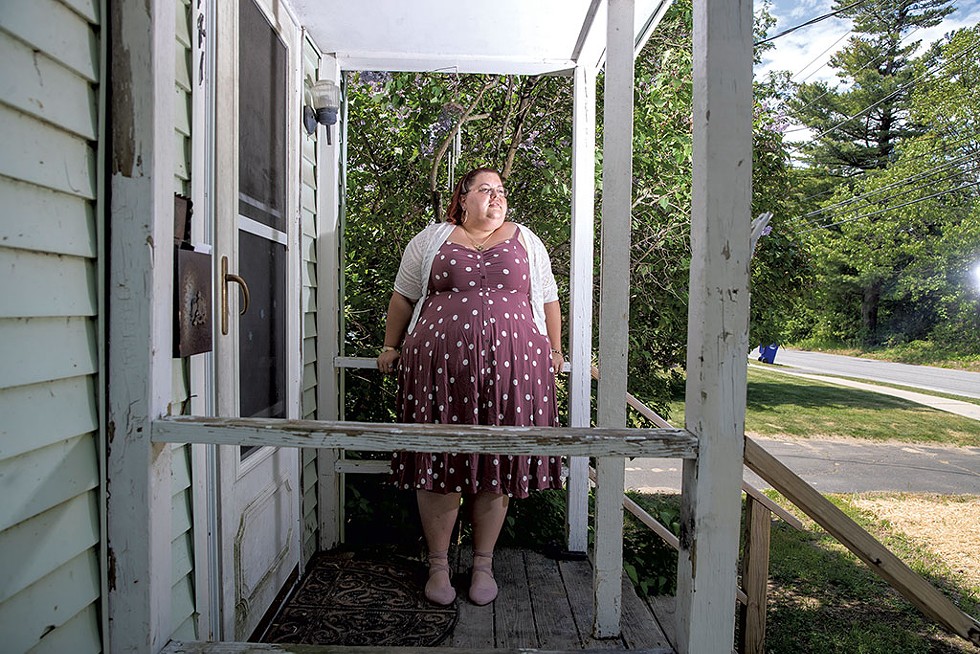
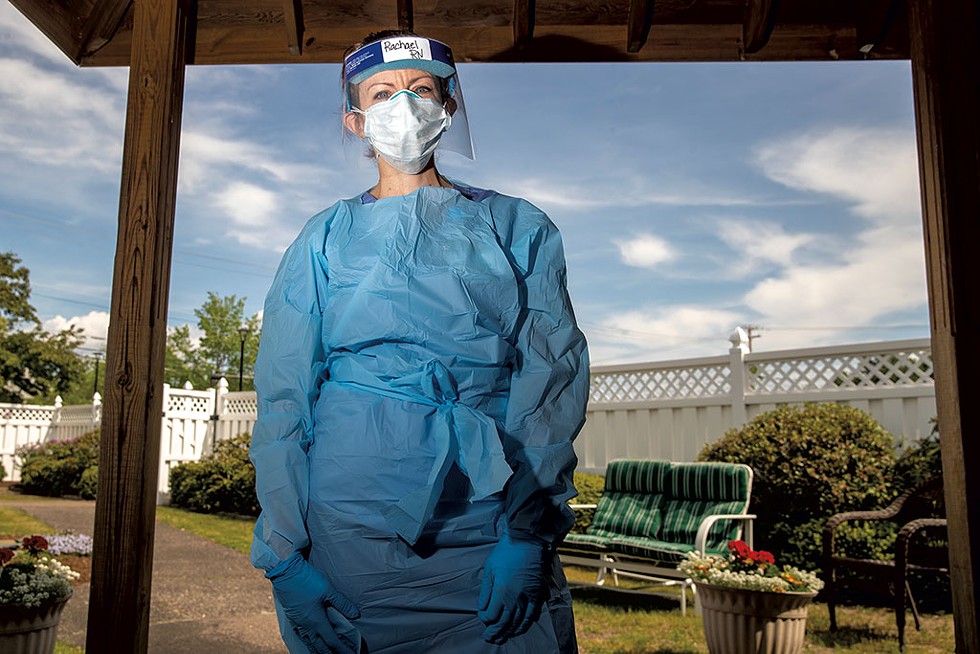
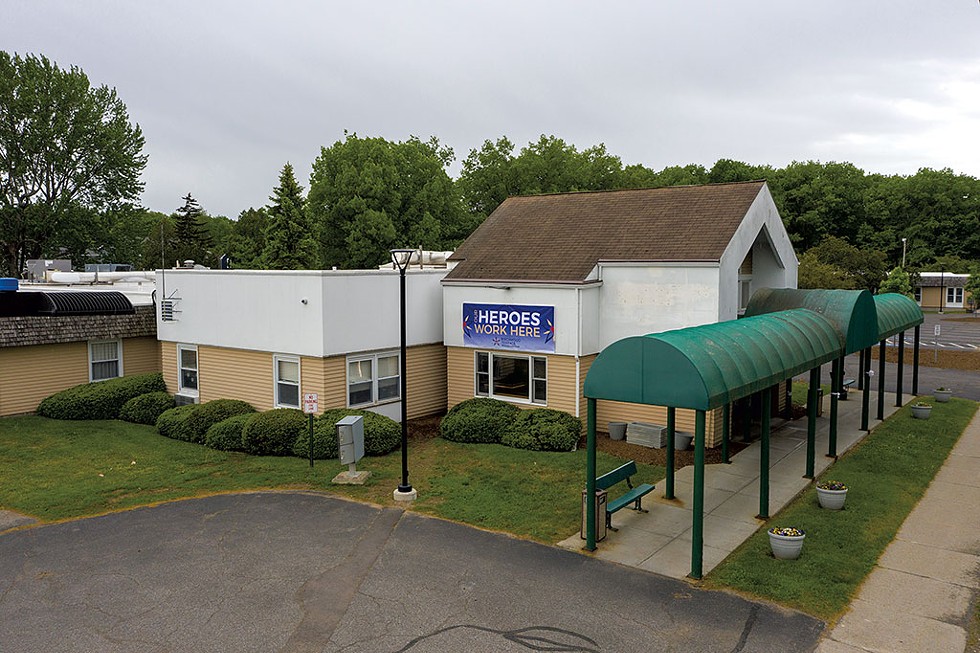

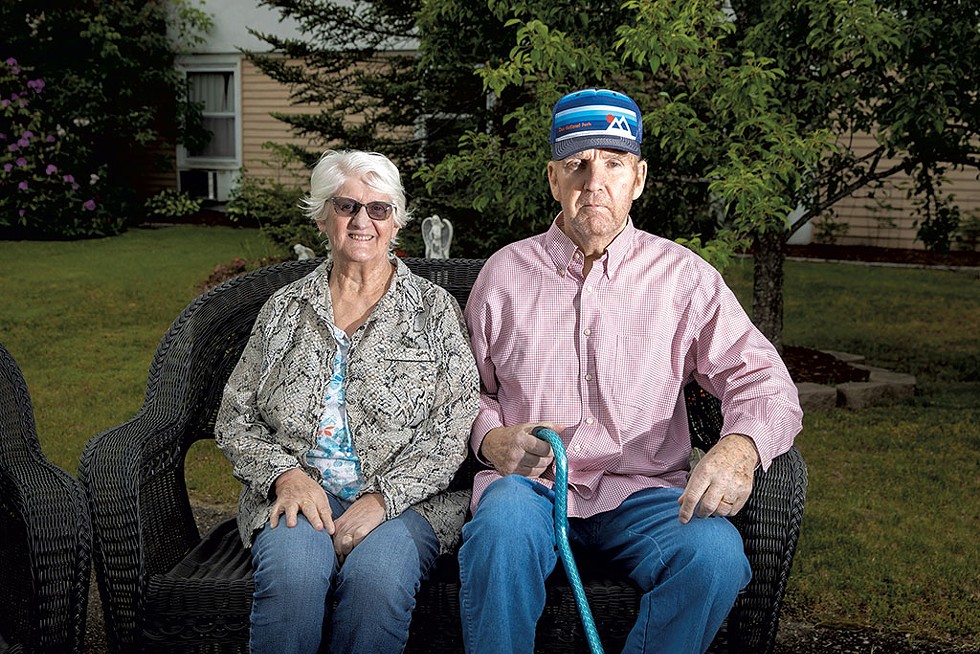
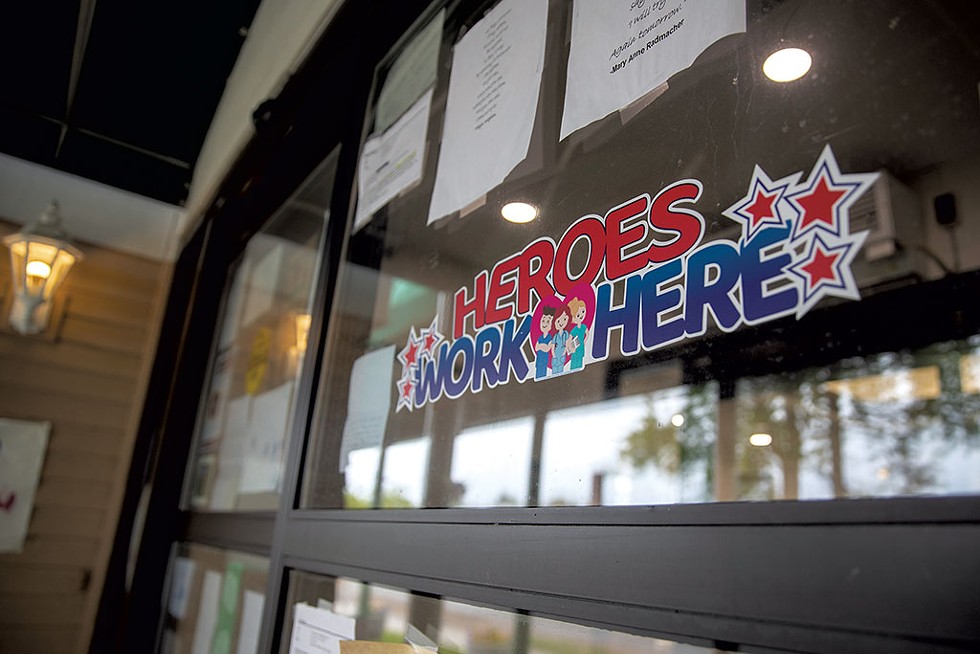
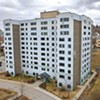

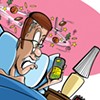


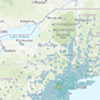

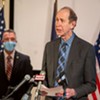




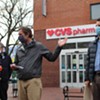

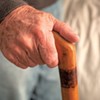


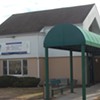
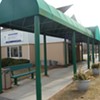
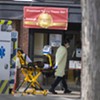
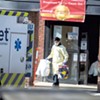
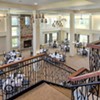
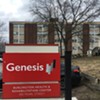



find, follow, fan us: